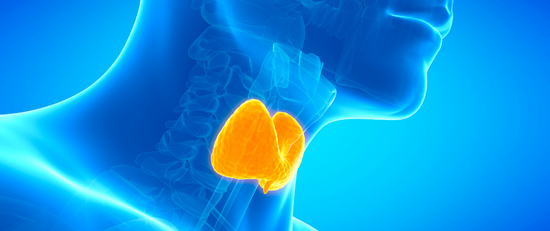The Link Between Inflammation & Cardiovascular Disease: Unveiling the Silent Culprit
By Dr. Kevin Passero
Cardiovascular disease (CVD) remains the leading cause of mortality worldwide. While traditional risk factors such as high blood pressure, elevated cholesterol levels and smoking are well-known contributors, recent research has shed light on another significant player: inflammation. Inflammation, typically associated with the body's defense mechanism, can inadvertently become a silent accomplice, promoting the development and progression of cardiovascular diseases.
This blog aims to explore the intricate relationship between inflammation and CVD, highlighting key mechanisms and potential therapeutic strategies.
To learn more about a natural way to promote a healthy inflammatory response to support your cardiovascular health, click here.
Understanding Inflammation
Inflammation is the body's natural response to injury, infection or tissue damage. Under normal circumstances, it is a tightly regulated process designed to restore tissue homeostasis. However, when inflammation becomes chronic or dysregulated, it can initiate and perpetuate a cascade of events leading to cardiovascular pathologies.
The Role of Inflammation in Atherosclerosis
Atherosclerosis, the primary underlying cause of most cardiovascular diseases, is a complex process involving the accumulation of cholesterol, immune cells and other substances within the arterial walls, forming plaque. Inflammation plays a pivotal role at multiple stages of atherosclerosis, from initiation to plaque destabilization.
1. Endothelial Dysfunction: The first step in atherosclerosis occurs at the endothelium, the single cell layer of cells that line the arteries. Endothelial dysfunction is characterized by impaired endothelial cell function and increased permeability allowing immune cells and lipid particles to penetrate into the wall of the artery. Inflammatory mediators, such as cytokines and adhesion molecules, stimulate the endothelium, leading to the recruitment and adhesion of immune cells, primarily monocytes, to the arterial wall which is one of the first steps in the formation of plaque.
2. Macrophage Activation: Monocytes that adhere to the endothelium migrate into the arterial wall and differentiate into macrophages. Macrophages are a type of white blood cell that surrounds and kills microorganisms, removes dead cells and stimulates other immune cells. Once inside the arterial wall, macrophages engulf oxidized low-density lipoprotein (LDL) particles and become cholesterol laden foam cells. These foam cells begin the formation of plaque by creating the first visible sign of atherosclerosis called “fatty streaks”.
3. Plaque Formation: Inflammatory signals in response to the endothelial damage and presence of foam cells perpetuate the accumulation of immune cells, smooth muscle cells and extracellular matrix components within the arterial wall, resulting in the formation of atherosclerotic plaques.
4. Plaque Destabilization: Advanced plaques can become unstable and rupture, leading to the formation of blood clots that can occlude blood flow. Inflammation promotes the thinning of the fibrous cap that covers the plaque, making it more susceptible to rupture.
Inflammatory Biomarkers and Cardiovascular Risk Assessment
Recognizing the role of inflammation in CVD has led to the identification of several inflammatory biomarkers that serve as indicators of cardiovascular risk. High-sensitivity C-reactive protein (hsCRP) is one of the most extensively studied biomarkers. Elevated levels of hsCRP have been associated with an increased risk of cardiovascular events, even in individuals with seemingly normal cholesterol levels.
Other inflammatory markers have also been discovered that can be very useful tools in predicting cardiovascular disease risk. Myeloperoxidase (MPO) and Lp-PLA2 are cardio-specific tests that directly measure inflammatory markers associated with plaque formation. MPO examines the white blood cell response in the bloodstream due to vulnerable plaque/erosions and fissures in the artery wall while Lp-PLA2 examines macrophage activation underneath the collagen cap within the artery wall.
Using a multi-marker approach to evaluating inflammation allows clinicians to make accurate assessments of cardiovascular risk without invasive studies. It also provides accurate and easily obtainable markers to track the progress of various treatment strategies. These tests are widely available from standard labs and typically covered by insurance.
Inflammation, once considered a solely protective response, is now recognized as a significant contributor to the development and progression of cardiovascular disease. The intricate relationship between inflammation and atherosclerosis highlights the need for a comprehensive understanding of the underlying mechanisms and the exploration of novel therapeutic strategies.
As research progresses, a deeper comprehension of the role of inflammation in cardiovascular disease will pave the way for improved prevention, risk assessment and targeted therapies, bringing us closer to a future where CVD is no longer the leading cause of mortality.
Durable TURMERIC® is a natural way to promote a healthy inflammatory response to support your cardiovascular health.
Click here to learn more.




